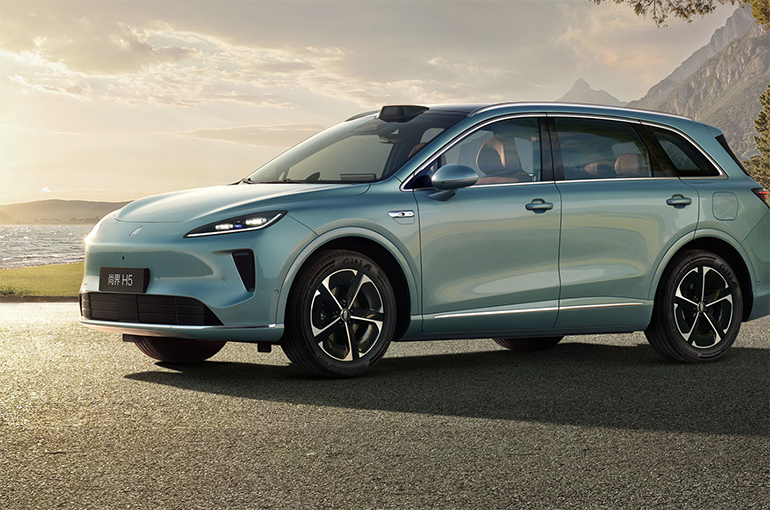 Huawei Steps Up Auto Push as It Launches New EV Brands With Carmakers SAIC, GAC
Huawei Steps Up Auto Push as It Launches New EV Brands With Carmakers SAIC, GAC(Yicai) Sept. 24 -- Chinese telecoms giant Huawei Technologies is expanding its footprint in the automotive market with the release of new brands and the deepening of existing collaborations.
The Shangjie H5, the first model under electric vehicle brand Shangjie, co-developed by SAIC Motor and Huawei’s full-set solutions partnership Harmony Intelligent Mobility Alliance, was officially launched yesterday. It began presales on Aug. 26 and has already secured about 160,000 orders.
Equipped with Huawei’s advanced driver-assistance system ADS 4, the Shangjie H5 is priced at CNY159,800 to CNY199,800 (USD22,600 to USD28,300), targeting the mainstream consumer market. It is the first HIMA-backed model priced under CNY200,000.
Shangjie faces significant cost pressure, and the first model will likely incur losses, said Richard Yu, chairman of Huawei’s Intelligent Automotive Solutions Business Unit. However, he was also optimistic that high sales volumes could help the brand achieve profitability quickly.
Shenzhen-based Huawei also announced on Sept. 19 that it would expand its partnership with Guangzhou Automobile Group with the launch of the new Qijing premium smart EV brand. The first Qijing model will be released next year in both battery electric and extended-range powertrain versions.
GAC announced in March that it would establish a subsidiary to launch Huawang, a new luxury intelligent EV brand in collaboration with Huawei. This partnership is deeper and more innovative than the usual HIMA model, a source at the Guangzhou-based carmaker told Yicai back then.
Qijing adopts a new cooperation model that is different from HIMA and Huawei Inside, where Huawei is only an intelligent systems supplier, according to industry insiders.
Under this new model, Huawei supports automakers across the entire product lifecycle, integrating processes, co-building teams, and expanding cooperation to include intelligence, ecosystem, and brand synergy. But unlike HIMA, where Huawei exerts significant control, this new model allows carmakers to retain greater decision-making authority.
Deepening Cooperation
Other auto manufacturers have also deepened their collaboration with Huawei, adopting a similar new cooperation model, including Dongfeng Motor on the Mengshi and Voyah brands and Changan Automobile on Avatr Technology.
This shift reflects a growing emphasis on differentiating products based on unique strengths of automakers, rather than relying solely on Huawei’s technological reputation.
Differentiation can be achieved through distinctive exterior designs and personalized features, with each maker’s manufacturing heritage and design language serving as a key competitive advantage, a spokesperson for Dongfeng Motor told Yicai.
Huawei collaborates with automakers in three ways. The first is as vertical parts supplier, where it is a traditional tier-one supplier providing one or multiple smart components.
The second is Huawei Inside. Under this approach, the company provides automakers with intelligent systems, such as autonomous driving. So far, Huawei is used this model with 11 car brands, such as GAC’s Trumpchi, Changan Auto’s Deepal, and BAIC Group’s Arcfox.
The third approach is HIMA, formerly known as Smart Selection. This model sees Huawei as full-stack solutions supplier, giving it a leading role in product definition and unit sales. The five brands under HIMA are Aito with Seres Group, Luxeed with Chery Automobile, Maextro with JAC Motors, Stelato with BAIC, and Shangjie with SAIC.
HIMA, which has been the most successful approach so far, delivered 52,700 vehicles in June, 47,800 in July, and 44,600 in August, marking three consecutive months of decline. Over 15 vehicle models on the market are equipped with Huawei’s Qiankun ADAS or HarmonySpace 5 intelligent cockpit system.
Editor: Futura Costaglione